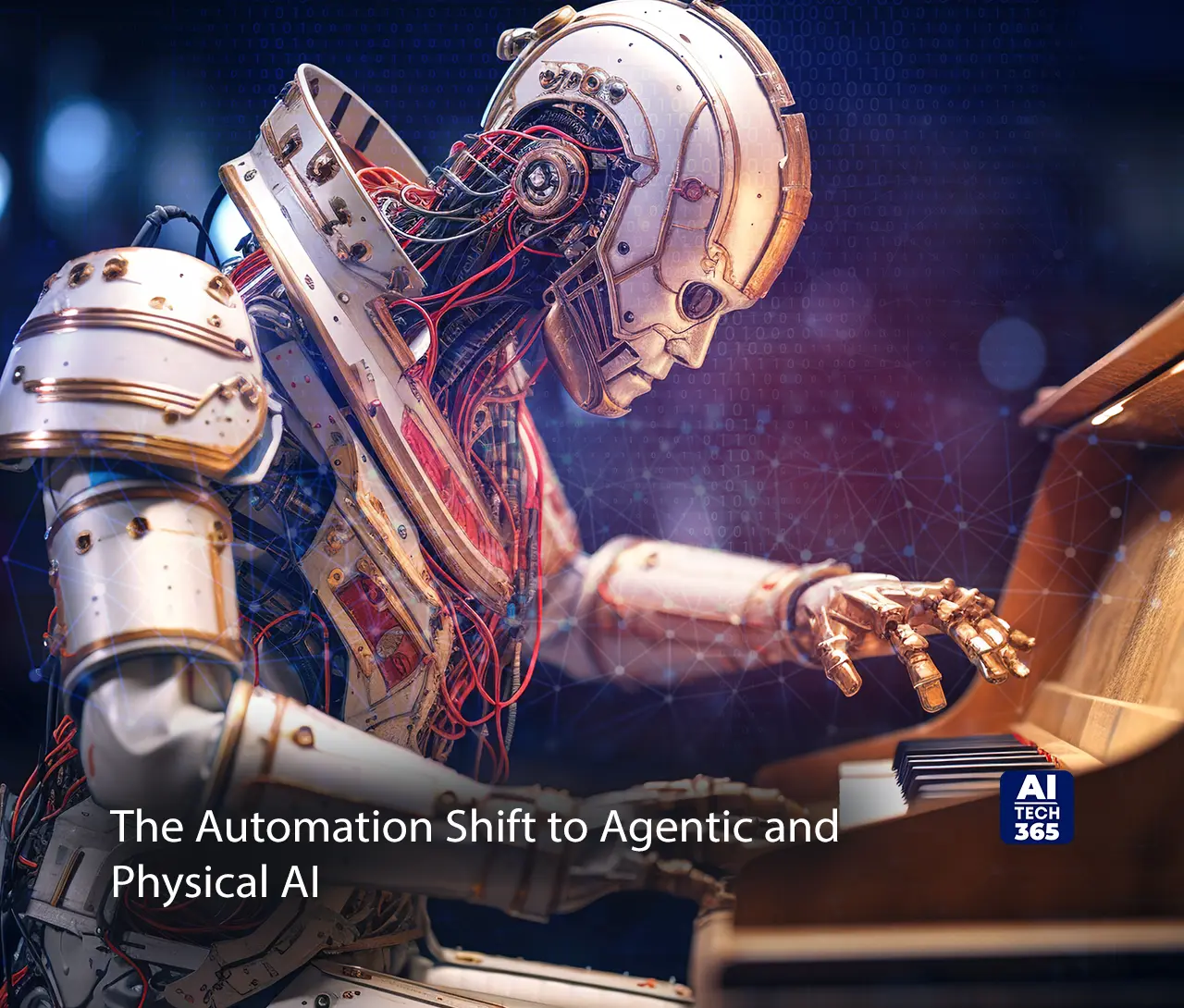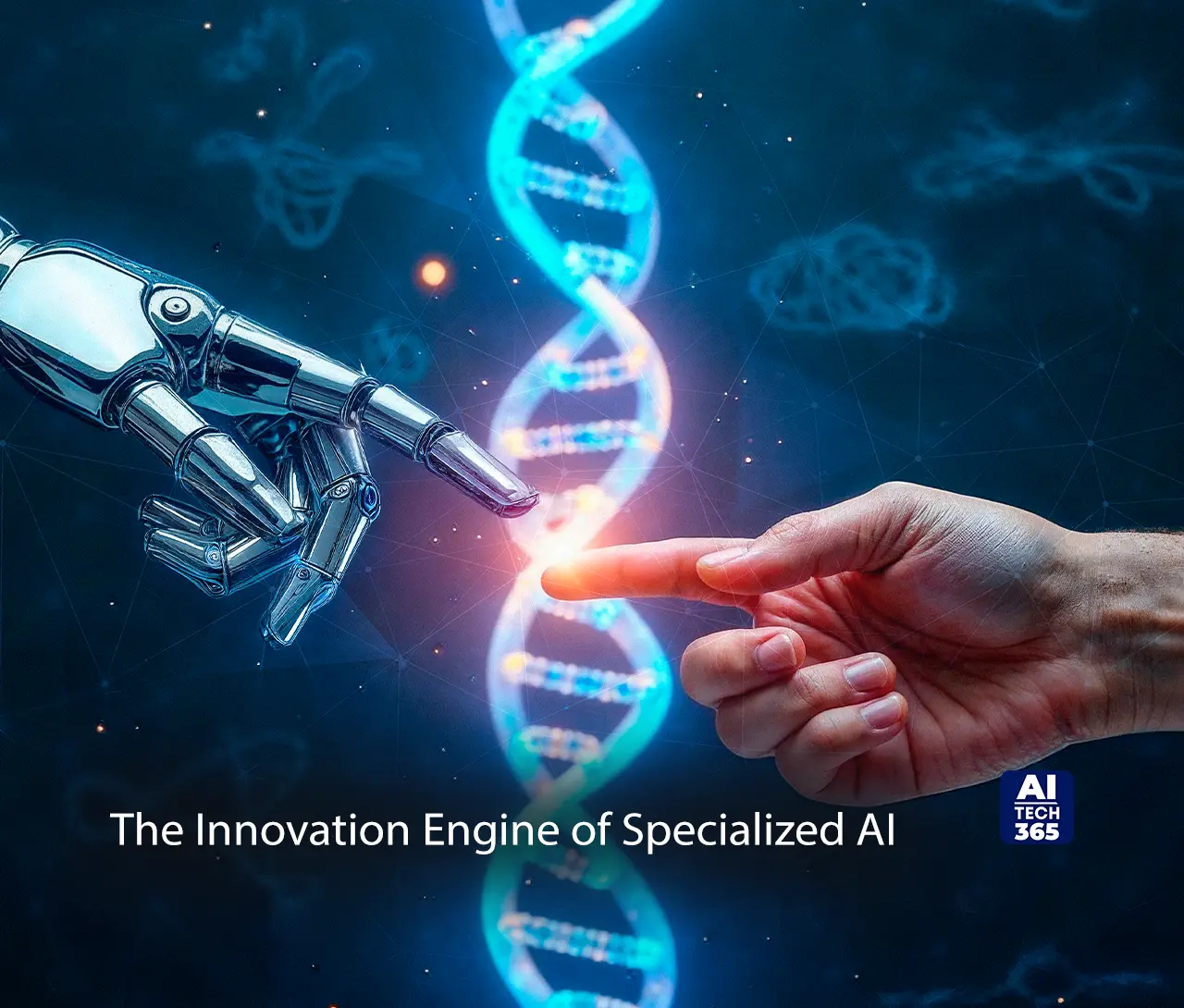AI is not just a helper anymore. It is starting to do things on its own. Copilots are fine, but autonomous agents are next. This is not about working faster. It is about changing the way a business actually works.
The next few months, until 2026, are going to be a turning point. Things that were experiments will go live. AI agents will handle real tasks in the business.
Leaders need to watch closely. Automation is moving to agents and robots that do real work. Specialized AI is helping companies create new products and services. Governance and trust are no longer optional. These are the AI trends that will decide who leads and who falls behind. Pay attention. Make decisions. Prepare. AI is about to do more than assist. It will take action, and your company has to be ready.
The Automation Shift to Agentic and Physical AI
AI is stepping out of the assistant’s shadow. It’s not just helping humans anymore. It’s executing, deciding, and moving things forward on its own. Autonomous agents are taking over complex processes, from end-to-end claims and fraud detection to dynamic supply chain decisions. These agentic AI developments are core AI trends shaping 2026, and leaders can’t just track tasks anymore. The real work now is managing results and measuring agent performance.
Microsoft’s Work Trend Index – The Frontier Firm (Apr 2025) shows that 2025 is the year companies stopped testing AI and started rebuilding around it. Organizations are embedding AI agents directly into operations to drive value. But integration isn’t enough. The Responsible AI Transparency Report (Jun 2025) reminds us that running these systems responsibly is critical. Ethical oversight, transparency, and reliability must go hand in hand with speed. Microsoft’s research on AI Agents and the Open Agentic Web (May 2025) further highlights how smarter reasoning and memory in agents now allow them to handle multi-step decisions with minimal human input.
The change isn’t just digital. Physical AI is here being it robots in warehouses, AI-guided tractors in agriculture, and predictive maintenance in factories. This is intelligence in motion, bridging the digital and physical worlds. AWS reports that 64 percent of manufacturers using AI in production already see positive ROI, with efficiency jumps of 20-40 percent and cost savings of 15-30 percent. Generative AI is following the same path. As AWS’s Generative AI Skills and Education Trends (2025) points out, AI is moving from experiments to fully integrated production systems, changing how employees learn, work, and create.
So what should leaders do? Start small. Pick five to ten processes where fully autonomous execution is safe and high-value. Run quick pilots to test ROI, refine operations, and see what works. This is the playground where humans and agents figure out their strengths together.
The bigger picture is clear. Agents are taking on routine and complex work alike. Humans still own strategy, oversight, and the big decisions. AI trends are forcing businesses to move faster, smarter, and sharper than ever. The real question isn’t if AI will take over these roles but it’s whether leaders are ready to step up, adapt, and stay ahead of the curve.
Also Read: The Rise of AI-Native Companies: How Business Models Are Being Rebuilt Around Intelligence
The Innovation Engine of Specialized AI
AI is no longer just a tool. It’s becoming the engine behind new ways of working and creating. AI is no longer just about text or images. Now it can create videos, 3D models, code, and even synthetic data for research. That means products get designed faster, and marketing content can feel truly personal. These innovations are among the AI trends defining 2026. The gap between companies that use them and those that don’t will only widen.
Take DeepMind’s Gemini 2.5. Released in October 2025, it beats every other model in browser and mobile tasks. It’s faster, smarter, and can tackle real-world problems without breaking a sweat. Then there’s AlphaGenome from June 2025. This AI can predict how tiny DNA changes affect gene function. That is not just clever coding. That is science and medicine being rewritten by AI.
Specialized AI is spreading beyond research. Smaller, custom models now handle legal work, medical diagnostics, and proprietary business data. They do things general AI can’t. At the same time, governments are insisting on Sovereign AI. Sensitive data and models often need to stay inside national or regional boundaries. Leaders have to plan for that.
So where should you start? Look at the work that matters most; high-value, regulated, or sensitive. Decide if you should build your own models or license them. Start small. Run pilots. Measure what works and scale it up.
The story is clear. AI is moving from general experiments to essential, specialized tools. Businesses that embrace it will set the pace. Those who don’t will fall behind. The question is simple: are you ready to lead or just catch up?
Risks, Regulation, and Trust
AI is moving faster than most people think. Rules are trying to catch up, but it is messy. The EU AI Act, US executive orders, and even some state laws are telling companies to track risks, be transparent, and report what AI is doing. If you ignore it, trouble will find you, and it will not wait.
Trust is a bigger problem than most leaders realize. AI agents are making decisions on their own. They can get things wrong. They can be biased. Sometimes they just make stuff up. That is not a small problem. It can hurt your business, your customers, and even employees. Cybercrime is growing too. Hackers are using AI to make malware, deepfakes, and clever social engineering attacks. These attacks are harder to spot and can cause serious damage. Data is messy. If you cannot prove where your training data came from, or how it was used, legal trouble is likely.
This is real. Microsoft’s report dated April 2025, titled Unlocking AI’s Global Potential, reveals that the use of AI can significantly increase the speed of the work process, provide solutions for difficult problems, and even contribute to the economic growth. However, the correct approach has to be applied for its effective result. You cannot just turn it on and wait for good things to happen. Oversight has to be in place from day one. That is the only way to make sure AI actually helps your business instead of causing headaches.
Leaders need a plan. Start by building an AI Governance Framework. Make it mandatory, not optional. Track every decision the AI makes. Classify risks clearly. Decide which systems need humans in the loop. Test them carefully. Run small pilots. Learn what works and scale it. Quick fixes do not work here. Your governance framework must grow as your AI grows.
Governance is not boring. It is the backbone of trust and the guardrail for growth. It decides if AI will help your business or create headaches. In the year 2026, these changes in the landscape will be the most important AI trends that the leaders won’t be able to overlook. Organizations that manage the governance area rightly will not only be able to glide through the process but also be able to make more insightful decisions and consequently, avoid losing money through errors. On the other hand, those who neglect this issue will face significant challenges.
The choice is simple. Act now. Set rules. Lead. Or wait and follow, hoping nothing goes wrong.
Strategic Leadership for 2026
AI is changing everything. Leaders cannot sit and worry about jobs being lost. The spotlight has to be set on the collaboration between humans and AI. It means providing new skill training to people, teaching how to create AI prompts, and devising positions of monitoring autonomous agents.
The contemporary leadership is measured by the results, not just the activities done. You need to guarantee that AI agents are performing their functions as required. Choose the areas where the use of specialized AI is justified and manage the hazards. Governance cannot be ignored. Trust is built or broken here.
The next 18 months’ matter. These AI trends will reshape how companies operate. The people who manage to set up proper ethical guidelines while growing AI will win over others. It is the responsibility of the leaders to determine the limits for what AI is allowed to do and what it is not allowed to do. Act now. Guide your teams. Make sure humans and AI succeed together.


